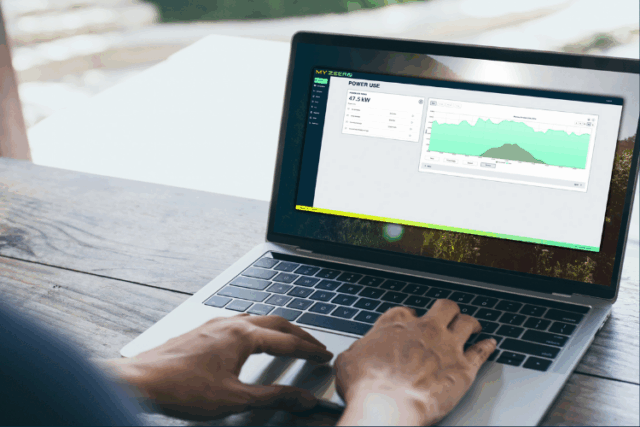Why sustainability progress reporting matters
Sustainability progress reporting is more than just a regulatory requirement. Done well, it becomes a valuable communication tool — showcasing your achievements, demonstrating accountability and helping stakeholders understand the tangible outcomes of your sustainability initiatives.

Why sustainability progress reporting matters
Sustainability progress reporting is more than just a regulatory requirement. Done well, it becomes a valuable communication tool — showcasing your achievements, demonstrating accountability and helping stakeholders understand the tangible outcomes of your sustainability initiatives. It reinforces your commitment to long-term targets like net zero and gives your business a baseline for continuous improvement.
Just as importantly, reporting helps translate goals into action. Accurate, consistent sustainability tracking supports ongoing progress. Whether you’re aligning with ESG standards, preparing for investor scrutiny or aiming to boost internal awareness, clear and credible reporting is essential.
Define the purpose and audience of your report
Before drafting your report, define its purpose. Are you demonstrating results to external stakeholders? Identifying areas for improvement internally? Meeting specific regulatory or ESG requirements?
Understanding this upfront ensures the content, tone and level of detail all support your end goal. A well-structured report begins with clear intent.
Align your report with stakeholder expectations
Different stakeholders care about different things. Investors may want quantitative evidence of environmental and social impact. Internal teams may need insights to improve performance. Tailoring the content accordingly helps you speak to each group in a language they understand.
Tailor your message for internal vs. external use
Internal reports can include more operational detail or technical data, while external versions may focus on outcomes, impact stories and future vision. Consider preparing tailored versions or appendices depending on your audience.
Include the right metrics and KPIs
Data is the foundation of any credible sustainability progress report. It ensures that achievements are measurable and progress can be tracked over time. But more isn’t always better — what matters is choosing metrics that reflect your real-world impact and align with your business goals.
Choose relevant environmental and social KPIs
These might include energy use, emissions intensity, waste diversion rates, diversity statistics or supplier audits. Select KPIs that align with your operations and material ESG topics.
Report against historical data to show trends
Progress is clearer when compared to past performance. Show how current results compare to the previous year, your baseline year or longer-term targets.
Include scope 1, 2 and 3 emissions where possible
These cover direct emissions (Scope 1), purchased energy (Scope 2), and value chain emissions (Scope 3). Including all three gives a fuller picture of your environmental footprint and positions you well for future reporting expectations.
A strong sustainability data management software solution ensures your data is accurate, centralised and ready for reporting. Combined with data analytics, this allows you to gain deeper insight into your organisation’s environmental performance, uncover trends and identify improvement opportunities.
Use clear visuals and accessible formatting
Sustainability data can be complex, but that doesn’t mean it has to be difficult to understand. Visuals help bridge the gap between technical information and clear communication.
Visualise year-on-year performance
Charts and infographics make trends easy to digest — whether you’re showing emissions reductions, energy savings or workforce diversity changes.
Use consistent formatting for clarity
Consistency in layout, headings, icons and colours ensures your report is easy to navigate. Keep formatting aligned with your brand and accessibility standards.
Include explanations for complex data sets
When showing calculations or technical results, add brief context or plain-language summaries. It helps non-specialist readers understand what the numbers mean.
Highlight key achievements and challenges
Transparency builds trust. Sustainability progress reporting is an opportunity to showcase what’s gone well — and where challenges remain. Avoid overly polished narratives. Instead, aim for a balanced, credible account.
Showcase project successes and impact
Highlight stories of real impact — such as carbon-saving initiatives, new energy-efficient technologies or supplier partnerships that improve sustainability outcomes.
Address gaps or targets not yet met
Explain where progress has been slower than expected. Whether due to operational challenges or shifting targets, acknowledging limitations demonstrates maturity and honesty.
Link reporting to wider strategy
Sustainability progress reporting should never feel like an isolated task. It should clearly reflect and support your long-term business and climate goals.
Connect progress to long-term sustainability targets
Link each metric or initiative back to your larger ambitions — such as science-based targets, ESG frameworks or stakeholder commitments. It helps demonstrate that your efforts are part of a bigger picture.
Reference your net zero action plan
Progress reporting should align with your net zero roadmap. Clearly show how each action or result contributes to your overall emissions strategy and climate targets.
Your sustainability progress reporting should align with your broader digital energy management system — reinforcing that energy and emissions tracking is integrated into daily operations, not managed in isolation.
Set goals for the next reporting period
Looking ahead is just as important as looking back. Set new goals that build on your progress and show how you plan to continue improving.
Define short-term and long-term targets
Set clear, time-bound goals and explain how they link to the performance data in your current report. Use SMART (Specific, Measurable, Achievable, Relevant, Time-bound) principles where possible.
Use baseline data to justify future goals
Tie each future target to a baseline or trend shown in your report. It reinforces credibility and makes it easier to assess future progress.
Make the report accessible and engaging
How your report is presented matters. Consider where and how people will read it and adjust your format and tone to suit.
Provide an executive summary
Include a short summary upfront — highlighting key metrics, achievements and next steps. Many readers will only scan the highlights.
Use plain language without jargon
Avoid technical language where possible. Use straightforward explanations to ensure all stakeholders can engage with your message.
Include team or leadership statements where relevant
Quotes or forewords from leaders or sustainability champions can add a human touch and reinforce the organisation’s commitment.
Keep improving the process
Sustainability reporting isn’t static. Each year presents an opportunity to refine what you report, how you report it and how it’s received.
Survey internal and external stakeholders
Ask readers what they found useful, what was missing and what could be clearer. This feedback can help shape next year’s content.
Review reporting against industry benchmarks
Compare your report with peer organisations or recognised sustainability standards. It helps validate your approach and identify areas for improvement.
Refine your data management tools over time
As your needs grow, so should your tools. Ensure your systems can support expanding KPIs, increased stakeholder demand and new disclosure frameworks.
If you need support building or refining your sustainability reporting process, get in touch with our team.
Conclusion
A strong sustainability progress report isn’t just about compliance. It’s a strategic tool that builds confidence, supports operational improvement and reinforces your commitment to meaningful change. By combining accurate data, accessible communication and clear links to long-term goals, you can turn your reporting process into a powerful driver of sustainability performance.
Related articles
-

Net Zero Pathway
Business sustainability strategies to meet ESG needs
In recent years, Environmental, Social and Governance (ESG) factors have risen to the forefront as critical indicators of a company’s long-term health, resilience, and integrity.
Find out more -

Market Insights
A guide to forecasting energy costs and consumption
Energy cost forecasting is no longer a luxury — it’s a necessity. For businesses in today’s volatile energy markets, predicting future costs and consumption can…
Find out more -

Net Zero Pathway
A guide to business energy management
Managing energy is no longer just a matter of cutting costs — it’s a strategic necessity. As businesses face rising energy prices, stricter regulations, and…
Find out more